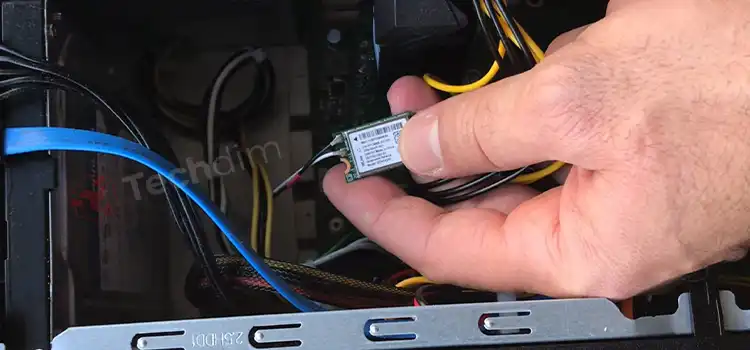How to Migrate to Google Cloud with Minimal Risk and Disruption
Google Cloud is an incredibly versatile and powerful cloud computing solution. It may seem overwhelming to migrate to Google Cloud. But with careful planning and execution, you can make the move without any drama.
In this article, we are going to take a look at how to migrate your on-premises environment into Google Cloud. We’ll be focusing on three main topics: planning your migration, migrating your applications, and managing your infrastructure in Google Cloud.
By the end of this article, you should have a good understanding of what is involved in a successful cloud migration project.

What Is a Google Cloud Migration?
Google Cloud migration is the process of moving your data, applications, and workloads from your on-premises environment into Google Cloud.
The benefits of migrating to the cloud are many, but some of the most common reasons for doing so include reducing costs, increasing agility and flexibility, and improving availability and disaster recovery.
Migrating to Google Cloud
Moving workloads to the cloud are typically one of the first steps in a digital transformation process since it improves system reliability while frequently reducing infrastructure expenses. But how should a cloud migration be carried out?
The migration process into google cloud can be divided into three steps;
- Planning your migration
- Migrating your applications
- Managing your infrastructure in Google Cloud
Planning Your Migration
Before you begin your migration, there are a few things you need to do in order to prepare.
- Define your goals and objectives: What are you hoping to achieve by migrating to the cloud? Defining your goals and objectives upfront will help you measure the success of your migration project.
- Assess your on-premises environment: Before you can migrate your workloads to the cloud, you need to assess your current on-premises environment. This includes identifying which workloads are good candidates for migration.
- Determine how your workloads will be migrated: Once you’ve identified the right workloads for migration, you need to determine how they will be migrated. This includes deciding whether to lift and shift or refactor your applications.
- Dependency Considerations: You also need to consider the dependencies of your workloads and how they will be handled during migration. For example, if you have a three-tier application, you need to determine how to migrate the database, application server, and front-end web server.
In addition, you need to take into account any networking dependencies, such as firewall rules and VPN configurations
Migrating Your Applications
Here, you need to choose the right tools and technologies for your migration. This includes selecting a cloud migration tool, such as Google Cloud Migration Manager, and choosing the right computing, storage, and networking services for your workloads.
Managing Your Infrastructure in Google Cloud
Once your migration is complete, you need to monitor and optimize your environment. This includes monitoring your application performance and ensuring that your workloads are running optimally in the cloud.
In addition, you need to provide post-migration support for your users and ensure that they have the resources they need to be successful.
Tips For a Successful Migration to Google Cloud
With careful planning and execution, successful cloud migration is within reach. Here are a few tips and tricks to help you get started:
- Define your goals. What are you hoping to achieve by moving to the cloud? Clearly defining your goals will help you create a plan that is tailored to your specific needs.
- Do your research. Not all cloud providers are created equal. Spend some time researching different providers to find one that is a good fit for your business.
- Create a detailed plan. Successful cloud migration requires careful planning. Make sure to map out every step of the process, from data backup to server provisioning.
- Stay organized. Moving to the cloud can be complex, so it’s important to stay organized throughout the process. Keep track of all your migrating data and applications, and make sure everything is accounted for.
- Test, test, test. Before live data is migrated, it’s essential to test the process extensively. This will help ensure a smooth and successful transition to the cloud
FAQs About a Google Cloud Migration
What Are the Main Challenges of Migrating to Google Cloud?
One of the main challenges of migrating to the cloud is ensuring that all data and applications are properly migrated. This can be a complex and time-consuming process, so it’s important to plan carefully and test extensively before live data is migrated.
What Are Some Common Mistakes Made During Cloud Migrations?
Some common mistakes made during cloud migrations include failing to properly assess the on-premises environment, not choosing the right tools and technologies, and not having a detailed plan.
How Can I Avoid Mistakes During My Cloud Migration?
To avoid these mistakes, you need to carefully assess your on-premises environment, choose the right tools and technologies, and develop a detailed plan. In addition, you need to test the migration process extensively before live data is migrated.
What Tool Is Used for Cloud Migration?
There are many tools that can be used for cloud migration, depending on your specific needs. Some common tools include Google Cloud Storage Transfer Service, Google Cloud Dataproc, and Apache CloudStack.
Going Further with Google Cloud
This guide provides all of the detail and nuance necessary to make an informed decision for organizations looking to consider a Good Cloud migration. With careful planning and execution, your transition to the cloud can be smooth sailing.
The transition isn’t easy, but if you work with Google Cloud migration experts they will put together a comprehensive migration strategy and ensure a smooth transition. With appropriate planning and preparation, your business can successfully make the switch to Google Cloud.
Subscribe to our newsletter
& plug into
the world of technology





